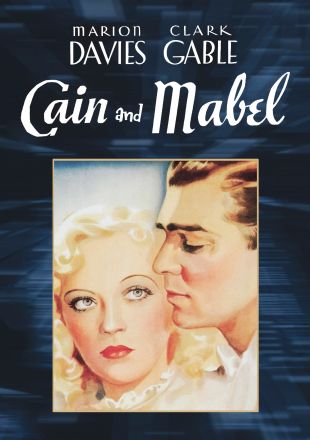
A member of the studio crew was reportedly visible in the background of one of the gigantic musical numbers in this vanity production, which threatened to completely capsize the waning career of Marion Davies. The unfortunate crew member is not detectable in surviving prints but a gaffe like that would merely prove a minor distraction in a film that had more than its share of embarrassments, chief among them Miss Davies' obvious lack of terpsichorean skills. Marion played a waitress turned Broadway dancing star whose show is suffering from a lack of glamour. Enter fast-talking publicity maven Roscoe Karns, who conjures up a non-existent romance between Miss Davies and prize-fighter Clark Gable (sans trademark mustache). Neither relishes each other's company but both the show and Gable's pugilistic prowess benefit from the association. But when the two fall in love for real and begin discussing retirement, their handlers become worried lest they lose their meal-tickets. Suffice it to say, this less than taxing conundrum is solved to everyone's satisfaction, and at ringside at that. Marion Davies handled the comedy as the old pro she was but in the end, Cain and Mabel proved a major humiliation. Apparently, Davies' benefactor, newspaper mogul William Randolph Hearst, demanded once again to see his beloved in virginal white organdy and bouffant sleeves but by 1936, Davies was a bit long in the tooth to play the naive ingenue. She was also no Ruby Keeler, but Laird Doyle's screenplay nevertheless centered on a girl, who at the drop of a hat takes over from a temperamental star (Pert Kelton) and, like Keeler's Peggy Sawyer in 42nd Street (1933), vows them with her verve and artistry. The result, amusingly inept as it may appear today, must have been devastating to Davies' self-esteem. Here she was, almost stationary in the midst of Bobby Connolly's over-produced musical numbers while such professionals as Sammy White and David Carlyle (later known as Robert Paige) try their level best to cover the lady's inadequacies. White is wonderfully nimble in a Coney Island number and Carlyle does justice to Harry Warren and Al Dubin's great songs, but they cannot hide the fact that Miss Davies' was completely out of her league. The distraction of a wayward scenery worker may in fact have been a blessing in disguise, if only he were visible! In the end, Cain and Mabel proved a notorious flop and Marion Davies wisely chose to retire when Hearst began experiencing financial difficulties in 1937.
